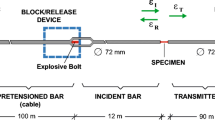Abstract
The influence of vertical gradients of gravity, air density and temperature, magnetic induction, as well as air convection on the measured mass of an extended specimen is theoretically estimated. An experiment designed to compare the mass of a vertically oriented nonmagnetic titanium bar to the same bar when oriented in the horizontal plane is described. Possible factors responsible for the discrepancy between the experimental results obtained and the theoretical estimates presented are discussed.
Similar content being viewed by others
References
E. A. Mudretsova and K. E. Veselov (eds.), Gravitational Prospecting. Manual of Geophysics [in Russian], Nedra, Moscow (1990).
Yu. S. Sedunov (ed.), The Atmosphere [in Russian], Gidrometeoizdat, Leningrad (1991).
M. Gläser, Metrologia,27, No. 2, 95, (1990).
Additional information
Translated from Izmeritel'naya Tekhnika, No. 5, pp. 22–24, May, 1998.
Rights and permissions
About this article
Cite this article
Dmitriev, A.L., Snegov, V.S. Influence of orientation of bar on its mass. Meas Tech 41, 425–429 (1998). https://doi.org/10.1007/BF02506616
Issue Date:
DOI: https://doi.org/10.1007/BF02506616




